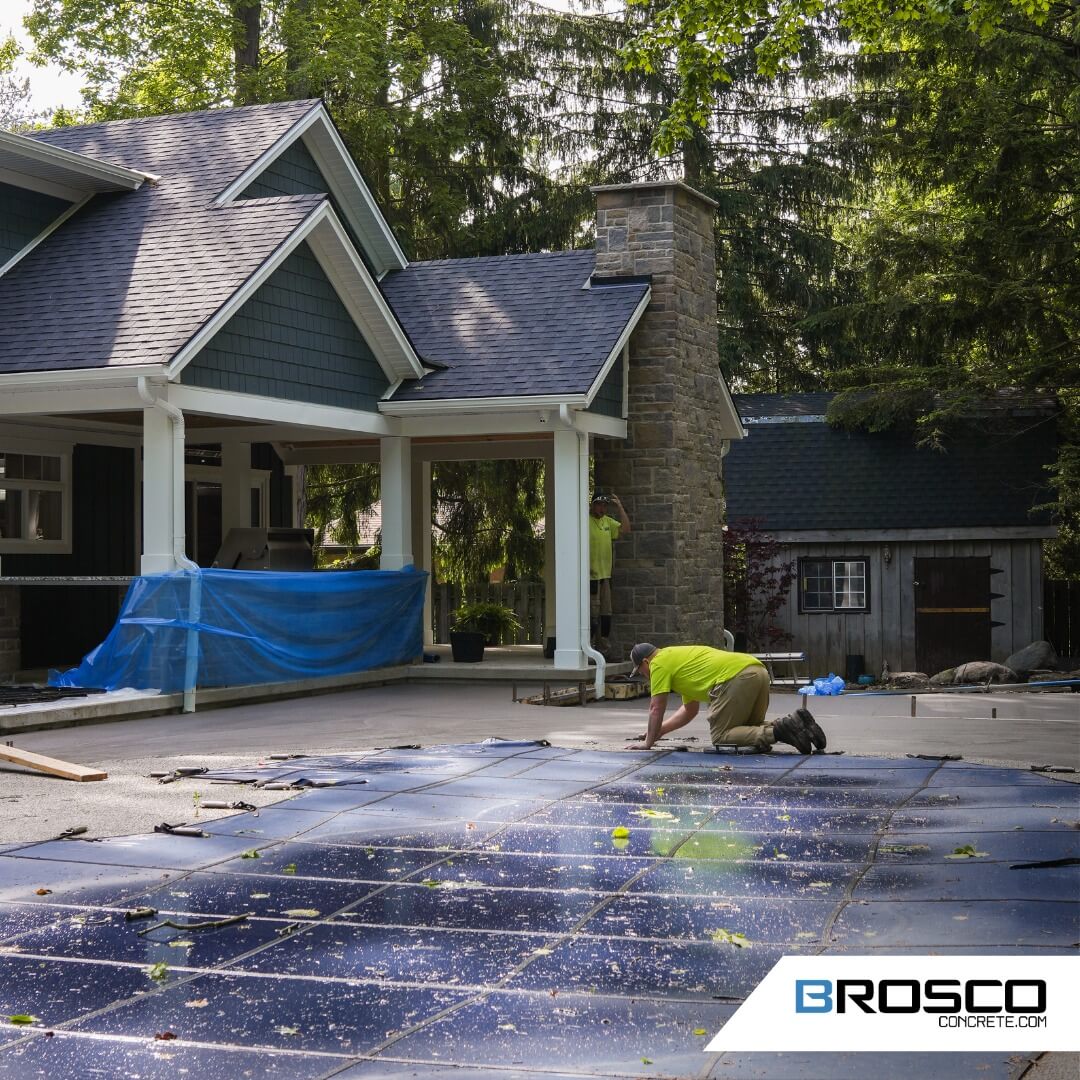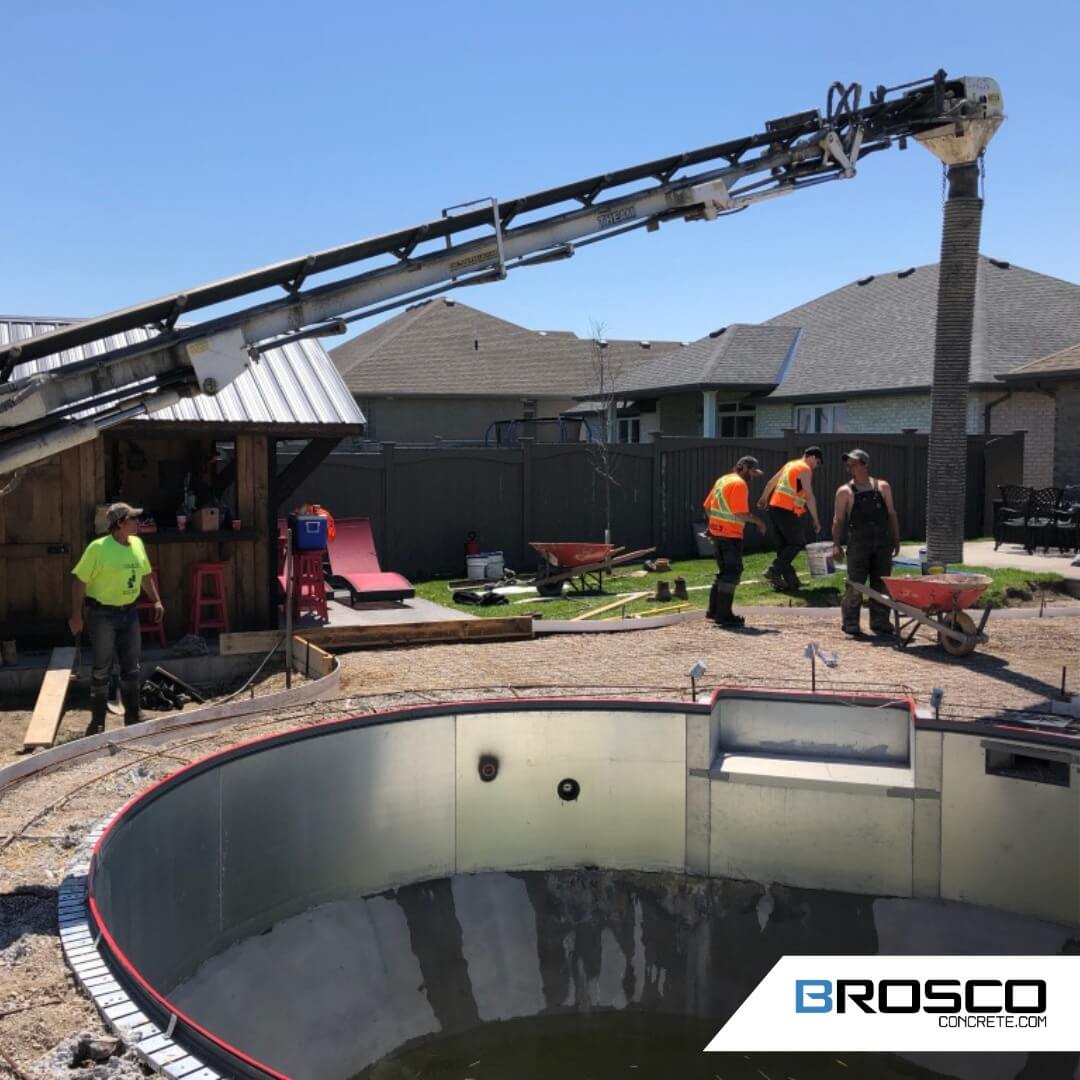
Heated Concrete Driveway – Dare to Dream
Does a heated concrete driveway sound like a luxury right now, as most of the province of Ontario cleans up after significant snowfall? Who wouldn’t dare to dream of eliminating the back-breaking task of clearing snow and ice from walkways and driveways? We’re here to answer a few questions if you are thinking about making that dream a reality.
- How do they work?
- Why would home and business owners want one?
- What are different systems are available?
- Are there different installation options?
- What are the costs and is it worth the investment?
It starts by embedding heating elements into the concrete slab during construction. The element has a sensor to detect outdoor air temperatures and moisture. Of course, the system requires a power source and some sort of controller to connect all these elements together.
When the sensor detects cold air and moisture, it triggers the system to melt the snow and ice. Some systems may operate manually with a switch. A heated concrete driveway is an outdoor version of a heated floor you might find in a basement, bathroom or entryway indoors.
Not only does a heated concrete driveway eliminate the winter time-consuming property maintenance tasks of plowing and shovelling snow or de-icing, but they can prevent potential damage to your property too.
This system uses a closed-loop tubing made of flexible polymer or rubber that circulates heated water and antifreeze to melt the snow. A boiler or water heater is the typical heat source, powered by your choice of natural gas, electricity, oil, wood, and even solar.
The advantage of a hydronic system is greater flexibility in power source which dictates operating costs. However, installation costs may be higher, response time for melting is slower, and the fluid in the tubes requires periodic maintenance.
Instead of tubes filled with hot water, you can use hot insulated, grounded wires to melt ice and snow. They often come in pre-sized mats with cables embedded inside. Power requirements depend on the square foot size of the surface and sometimes require circuit panel upgrades.
The advantage of an electric system is the quick warm-up time so the snow melts faster. But, you must use electricity to operate the system which is typically more expensive.
A radiant heating system is not just for driveways. Patios, sidewalks, decks, and even steps can be automatically clear of snow and ice too.
You don’t necessarily need to install a new heated concrete driveway system to get the benefits of automatic snow and ice melting. Running tubing under your current pathway is an option or cutting into the existing driveway to install the system. However, replacing your driveway ensures correct installation and is more likely to include a warranty.
Some homeowners may elect to just install heating cables or snow melting mats where vehicle tire tracks run.
When budgeting for a heated concrete driveway, consider the cost of removing the old driveway, installing the system itself, and the replacement cost of a new driveway and any decorative finishes.
Then, consider the cost of operating the system. Water, electricity, any type of antifreeze product, etc. This portion of the expense is often comparable to the cost of snow removal but is significantly more convenient.
To determine if a heated concrete driveway is worth it, weigh the costs with the benefits. Give Brosco Concrete a call to discuss your unique situation and options available to suit your needs. We are happy to give you some advice.














